- Home
- Knowledge library
- How cattle house flooring can reduce ammonia emissions
How cattle house flooring can reduce ammonia emissions
There are several different cattle housing and flooring systems that are already commonplace on UK farms and others that are now available.
Automatic passage scrapers
Automatic passage scrapers are an effective way of ensuring passages are scraped regularly and can be set to run as frequently as every hour. The system provides a clean floor, reducing the risk of contamination of beds and animals.
There are concerns about increased dermatitis. This increases with less frequent scraping which causes larger ‘bow waves’ of slurry (see image below) in front of the scraper, washing over the cows’ feet.
Maintaining drains and repairing broken or badly laid concrete will help prevent effluents from ponding and improve the effectiveness of scraping.
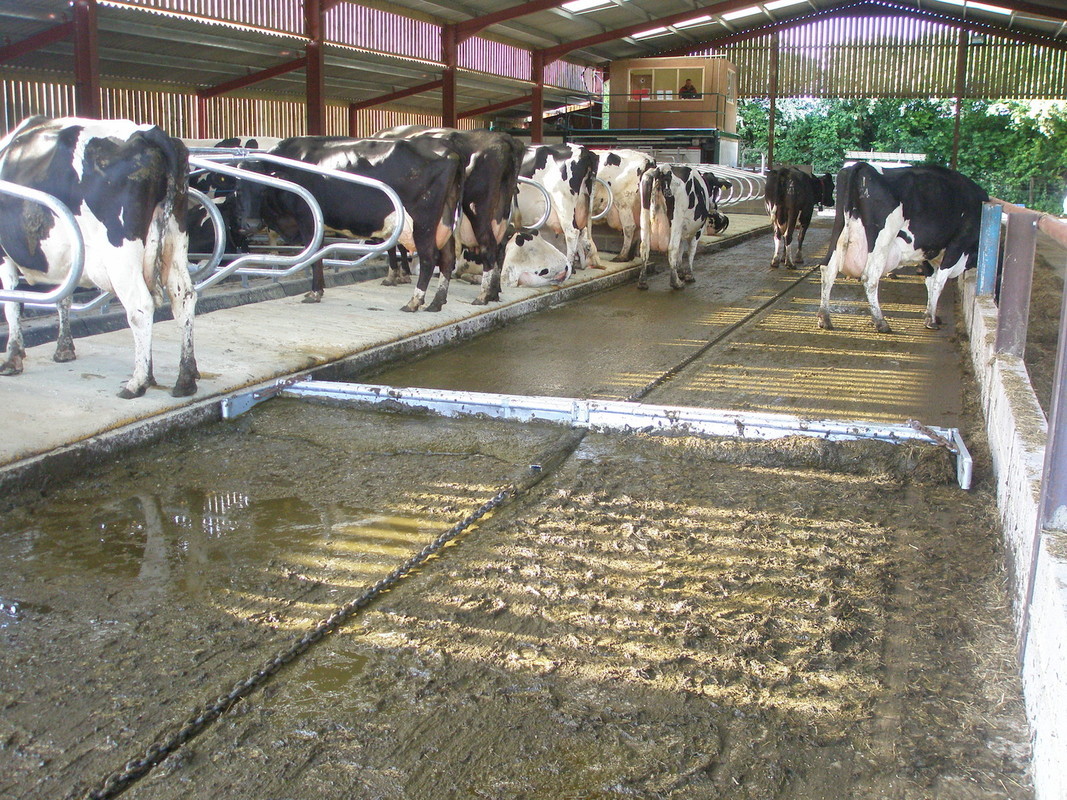
Robotic scrapers
Robotic scrapers can be used effectively to reduce ammonia emissions. There are a range of scrapers available, but most will only work on a slatted floor system. They have the advantage over automatic passage scrapers as they can often reach more areas of the shed.
Depending on your shed size, it may be necessary to have more than one robot to ensure all areas can be scraped every two hours whilst allowing charging time.
Below is an example of a robotic scraper being used on a slatted floor system.
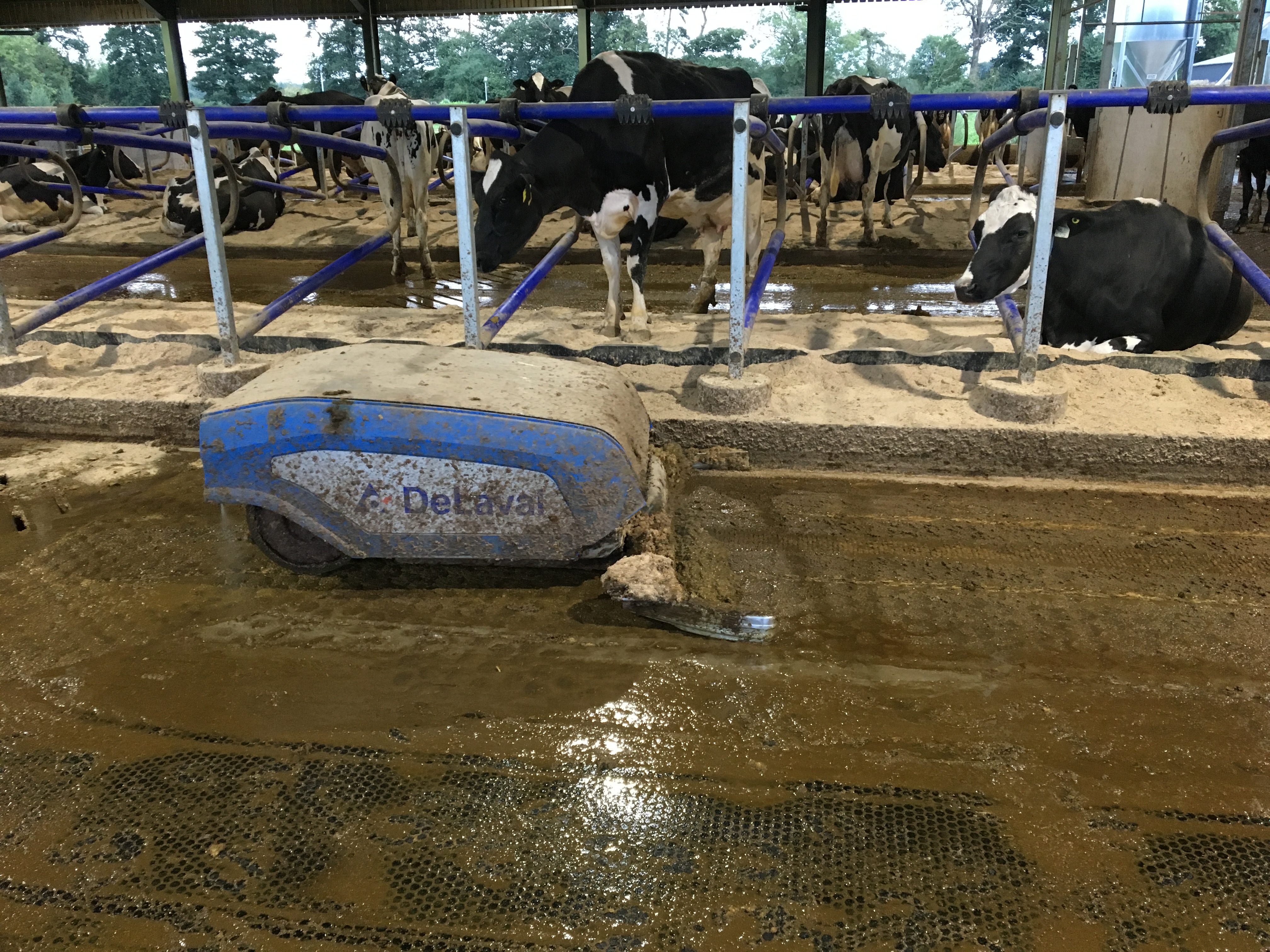
Some robotic scrapers also dispense water onto the slated area to create a cleaner surface than scraping alone, this removes residue more effectively, further minimising emissions.
Washing scraped surface areas
Scraping with a rubber or steel scraper will leave residue and allow ammonia to be released.
Studies have demonstrated that washing with water post scraping can result in a reduction of up to 70% of emissions, compared to scraping alone (Kroodsma et al. 2008). This is more applicable to collecting yards, milking parlours, dispersal yards and cattle handling areas than cubicle passages and loafing areas.
Flood washing
To remove slurry, some farms practice flood washing in the passages of the cubicles. If done with clean or recycled water, it will provide an effective reduction in emissions. However, using separated diluted slurry, which is what these systems often use, it is unlikely to reduce the opportunity for ammonia volatilisation from the concrete surfaces.
Studies have shown that flushing every two hours with 50 litres of water per cow per day directly post scraping, can reduce ammonia by around 34% in addition to scraping alone.
Using 28 litres per cow per day will similarly see a 14% additional reduction of TAN. (Huis In’t Veld et al. (1994) and De Boer et al. (1994)).
These options add to the volume of slurry that needs to be stored and spread. Given that an average dairy cow will produce around 50 litres of slurry per day, this technique could double storage requirements, spreading volumes and increase water bill costs.
Floor construction
Ammonia is produced when the urease enzyme within animal faeces reacts with urea in urine, resulting in ammonia being volatilised. Options for emission reduction in livestock housing, therefore, focus on the floors of the housing where the urine and faeces end up.
Floors that are designed to allow either rapid separation of the faeces and urine or the removal of the combined product (slurry) to an environment where gaseous exchanges are minimised, can effectively minimise emissions per cow.
Low emission flooring
The image below shows a low emission floor, which is sloped with a separate urine channel and emits 8 kg NH3 per cow per year when frequently used with a plastic or rubber scraper. This sloping floor profile is fitted with a gutter for urine under a 1.5% slope. This design allows the urine to drain away quickly, reducing its contact with the faeces, thus minimising ammonia emissions.
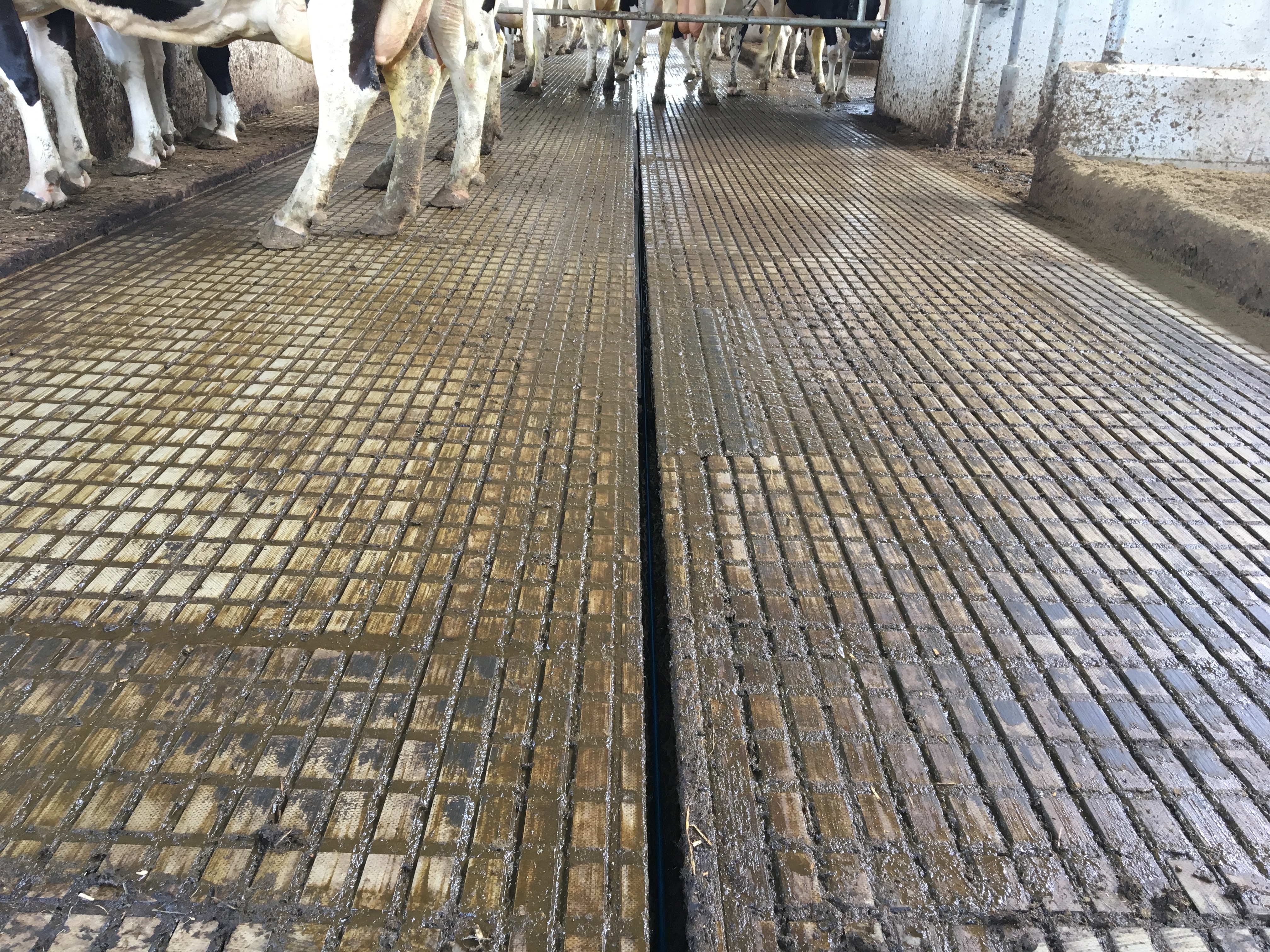
Grooved floors
The image below shows a grooved floor system which also works using effective drainage. The ‘grooved floor’ system for dairy and beef cattle housing uses ‘toothed’ scrapers running over the grooves and is a reliable technique to slow NH3 emissions.
Grooves can be perforated to allow even better separation of urine into storage below. This results in a clean, low-emission floor surface with good traction for cattle, to prevent slipping.
Records show that ammonia emission reduction ranges from 25% to 46% relative to the reference system (Smits, 1998; Swierstra, Bram and Smits, 2001).
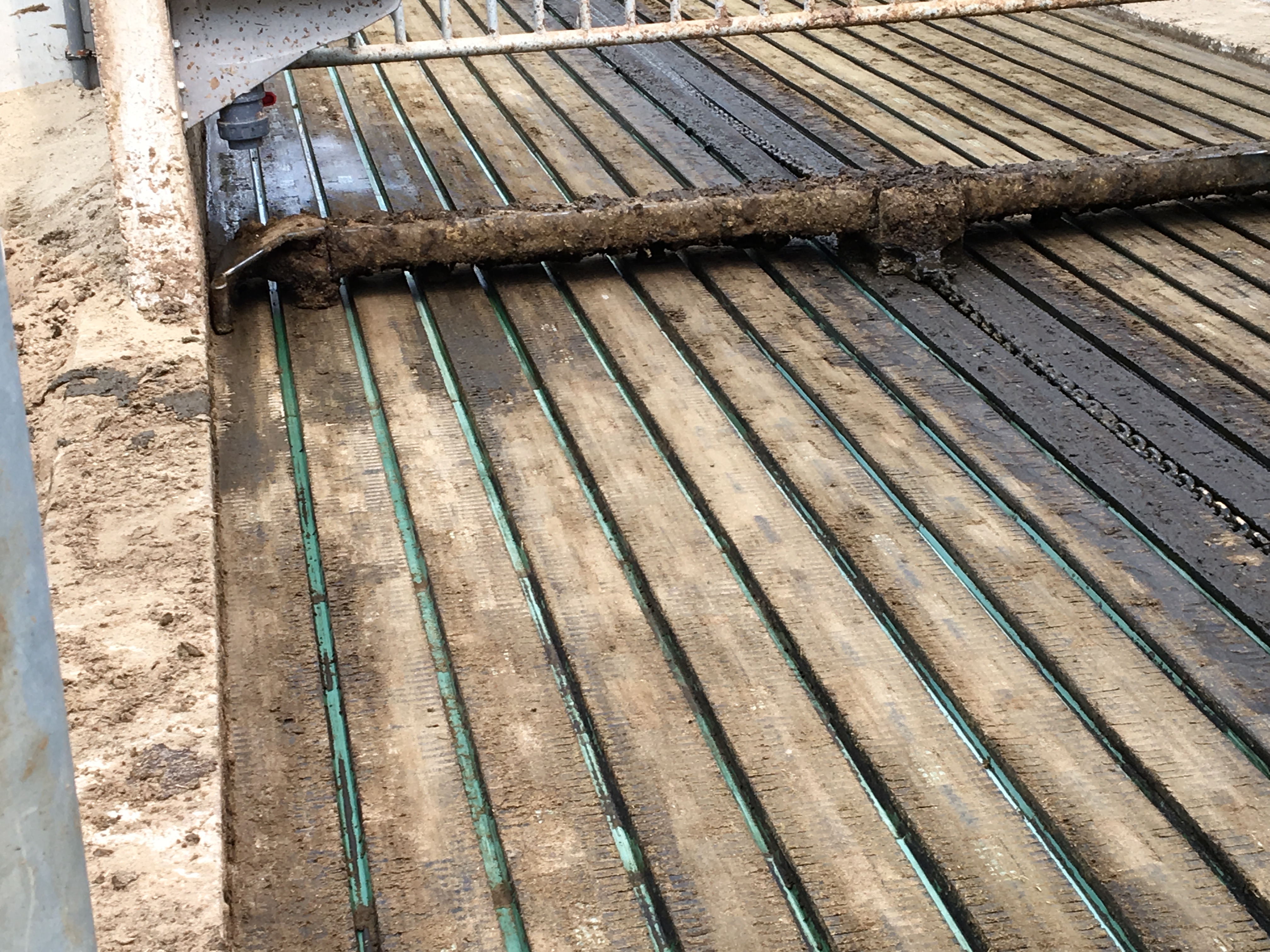
Slatted floors
A slatted floor with slurry storage beneath is a popular system in Holland, as seen below. Most work done on ammonia emission from cattle housing in Holland is based on this construction. Slatted floor systems are less popular in the UK.
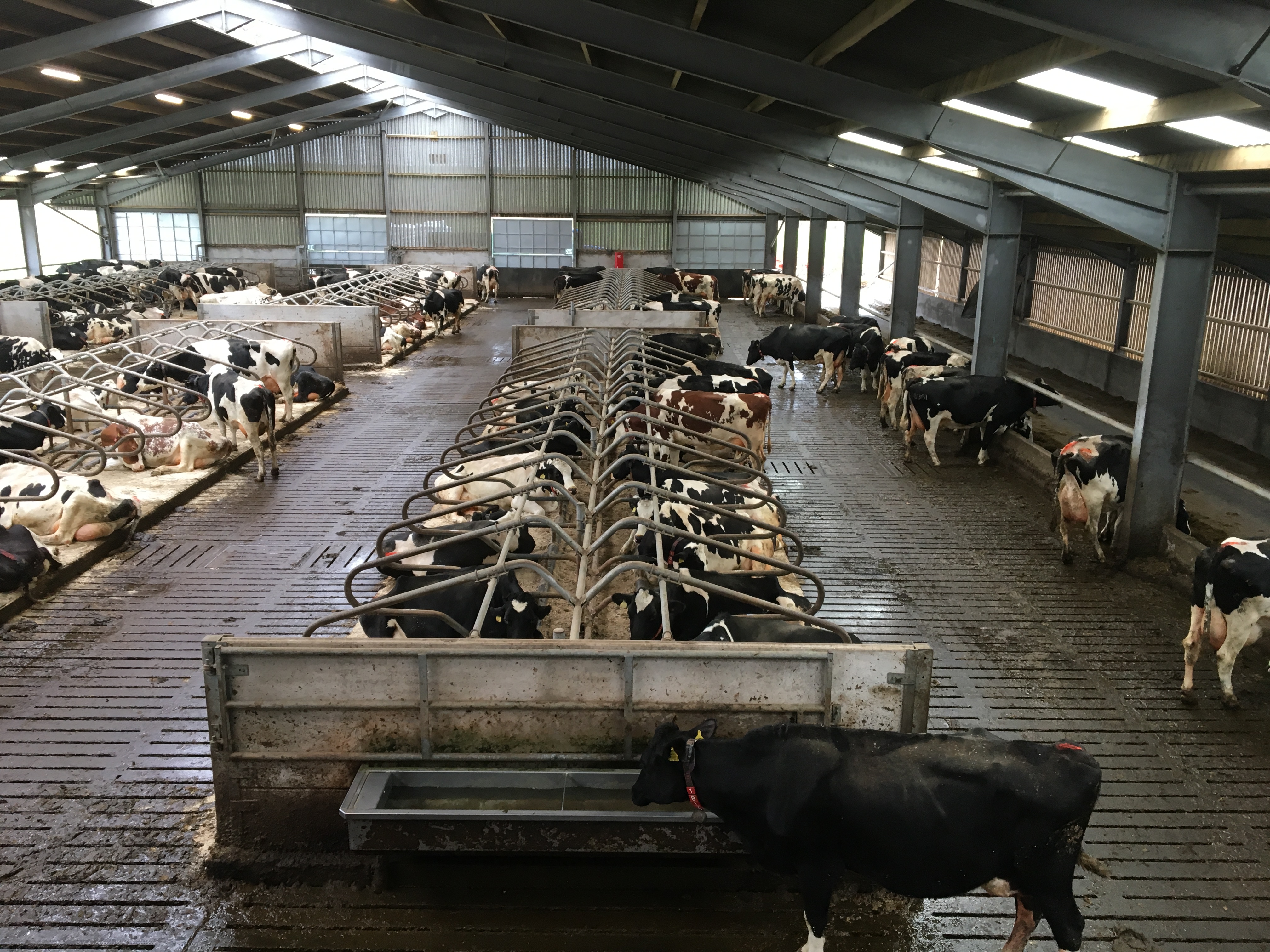
Sixty per cent of the total emissions from a standard slatted floor system will come from the slat surface, the other 40% will come from the pit beneath.
Standard slatted floors which rely solely on gravity and cow traffic to clean the slats of manure have a higher rate of ammonia emission reduction (40–60%) than a solid concrete floor which allows effective drainage and is regularly scraped. The liquid will remain on the slats, increasing the volatilisation. Grooved slats, to facilitate drainage, will result in lower emissions.
Emission from urine puddles
Urine volume and urea concentration determine the amount of urea on the floor and thus also the potential NH3 production and emission from the urine puddles. Braam & Van Den Hoorn (1996) reported typical values for both parameters are 0.6 mm and 0.8 m2 respectively for clean slatted floors, while for V-shaped (3% slope) solid floors due to draining of urine typical values are 0.15 mm and 1.2 m2 respectively.
The potential NH3 emission for a slatted floor is on average three times higher than for a V-shaped solid floor. Reduced potential emission and air exchange when using solid floors may contribute to lower emissions.
Building regulations in Holland require newly installed floor systems to have an emission factor no more than 8.6 kg NH3 per head per year. Some slatted floor systems incorporate ‘flaps’ or non-return valves to reduce the gaseous exchanges between the slurry store beneath and the walking surface above. This can be seen below.
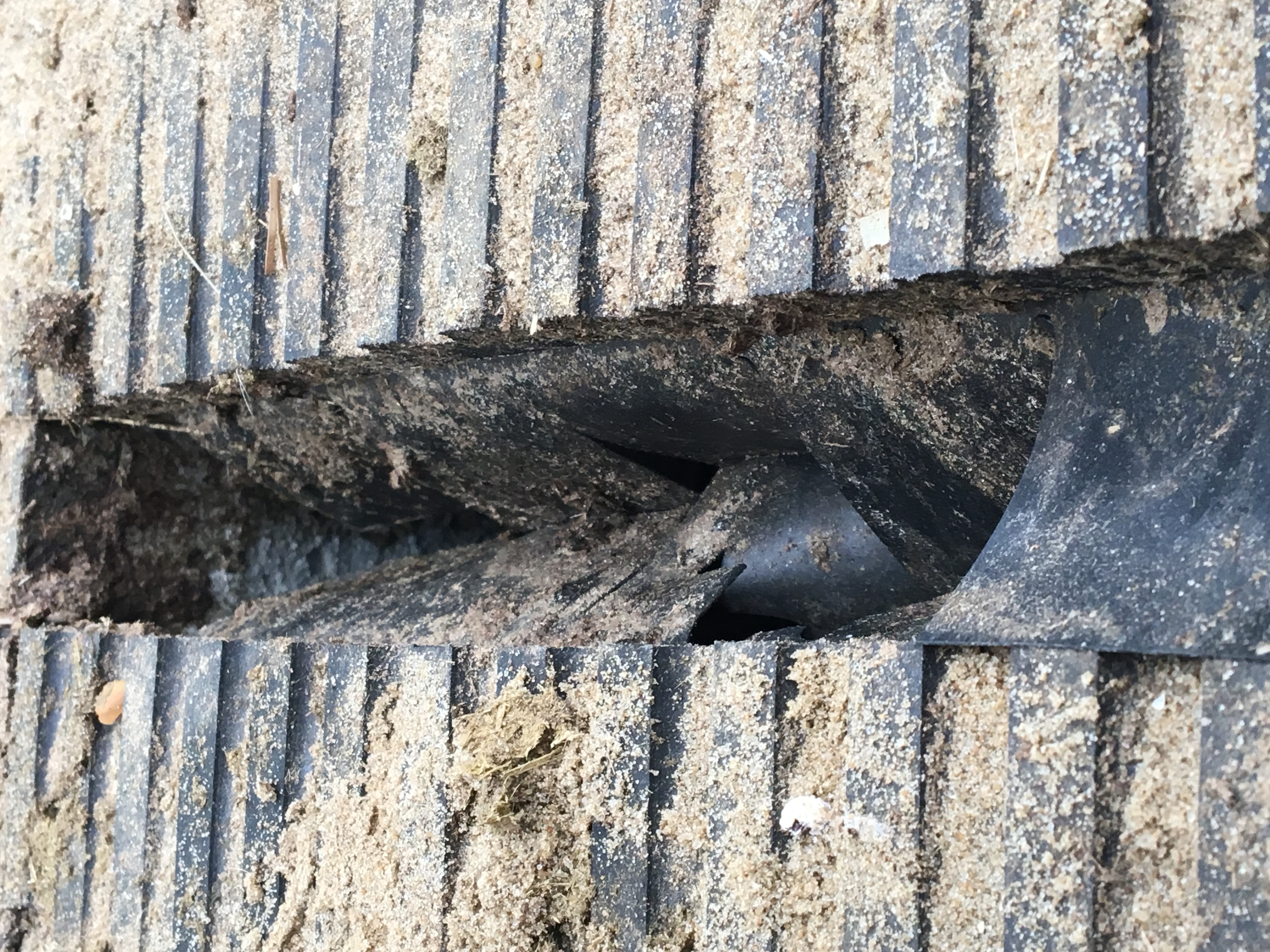
One manufactured version of the moulded slat cover with the non-return valve recorded only a 32% reduction in ammonia emissions during trials compared with the non-scraped standard slat. It was felt that this version was less effective as valves either did not close properly or the slurry was not able to open the valve and so remained in the channels allowing volatilisation.
Novel floors are being trialled in Holland, which uses a geotextile membrane to allow the liquid to drain through, but solid material to remain on the surface. A robotic sweeper/scraper removes the solids. Membrane durability has been a problem and the effectiveness of the scraper is dependent on the consistency of the solids. The separation of urine and faeces results in much-reduced ammonia emissions, but this technology is in the early stages and needs further development.

